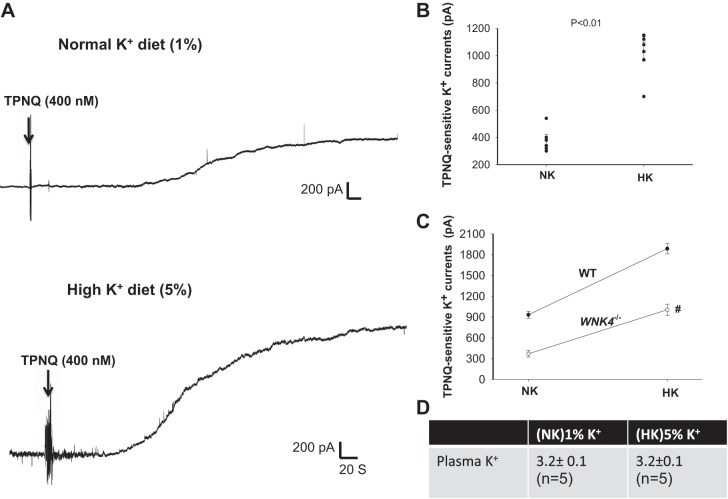Fig. 4.
HK-induced stimulation of ROMK in late distal convoluted tubule (DCT2)/connecting tubule (CNT) is preserved in kidney-specific-with-no-lysine kinase-null (WNK4−/−) mice. A: whole cell recording shows tertiapin-Q (TPNQ)-sensitive K+ currents at −40 mV in of WNK4−/− mice on normal potassium (NK) and high potassium (HK). Arrows indicate the addition of 400 nM TPNQ to the bath. B: scatterplot summarizes the experiments in which TPNQ-sensitive K+ currents were measured at −40 mV with whole cell recording. Results were obtained from six experiments (tubules). C: line graph shows the effect of dietary K+ intake on TPNQ-sensitive K+ currents in the DCT of wild-type (WT) and WNK4−/− mice. The # symbol indicates the difference between WT and WNK4−/− mice is significant using two-way ANOVA. D: table shows plasma K+ concentrations of WNK4−/− mice on NK and HK diets for 7 days (n = 5 mice).

